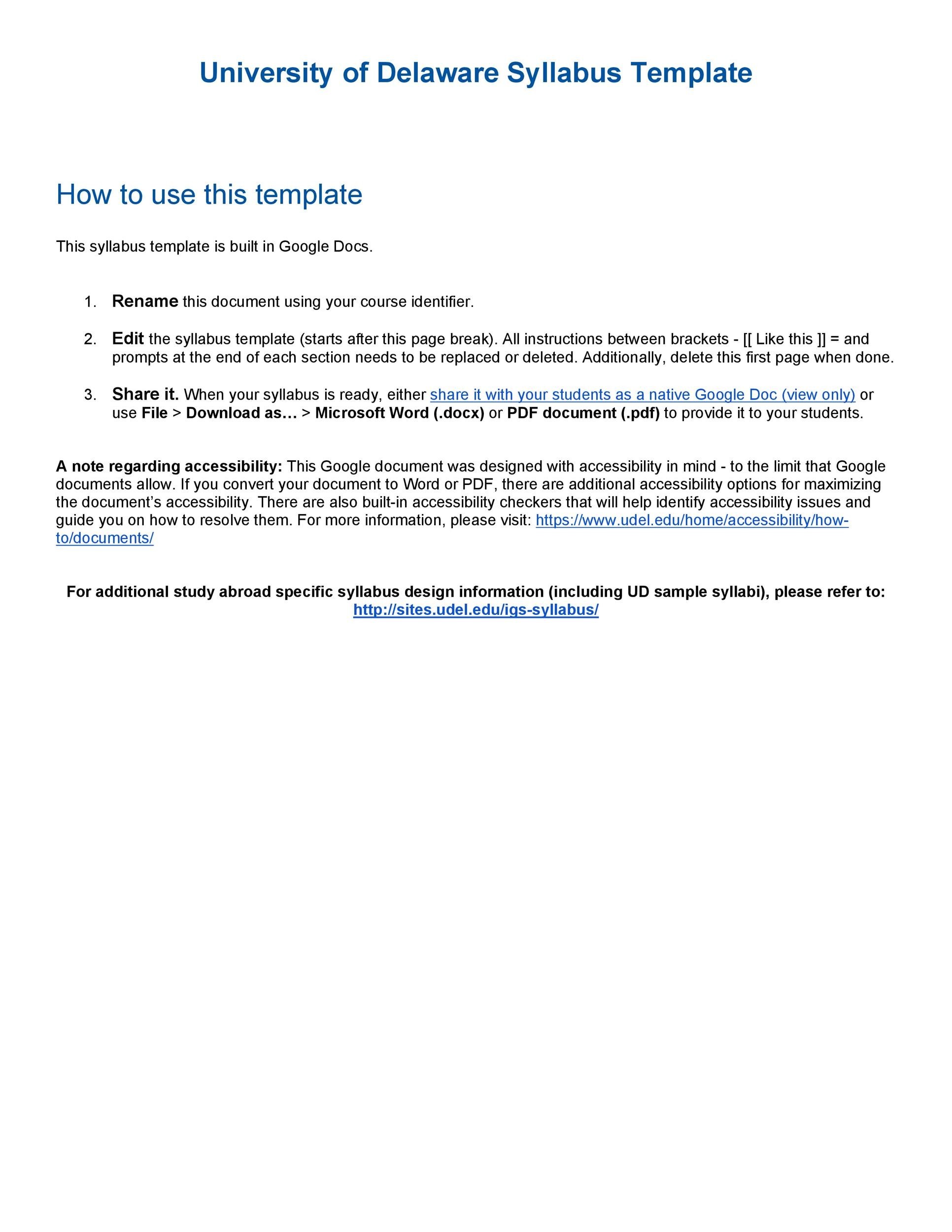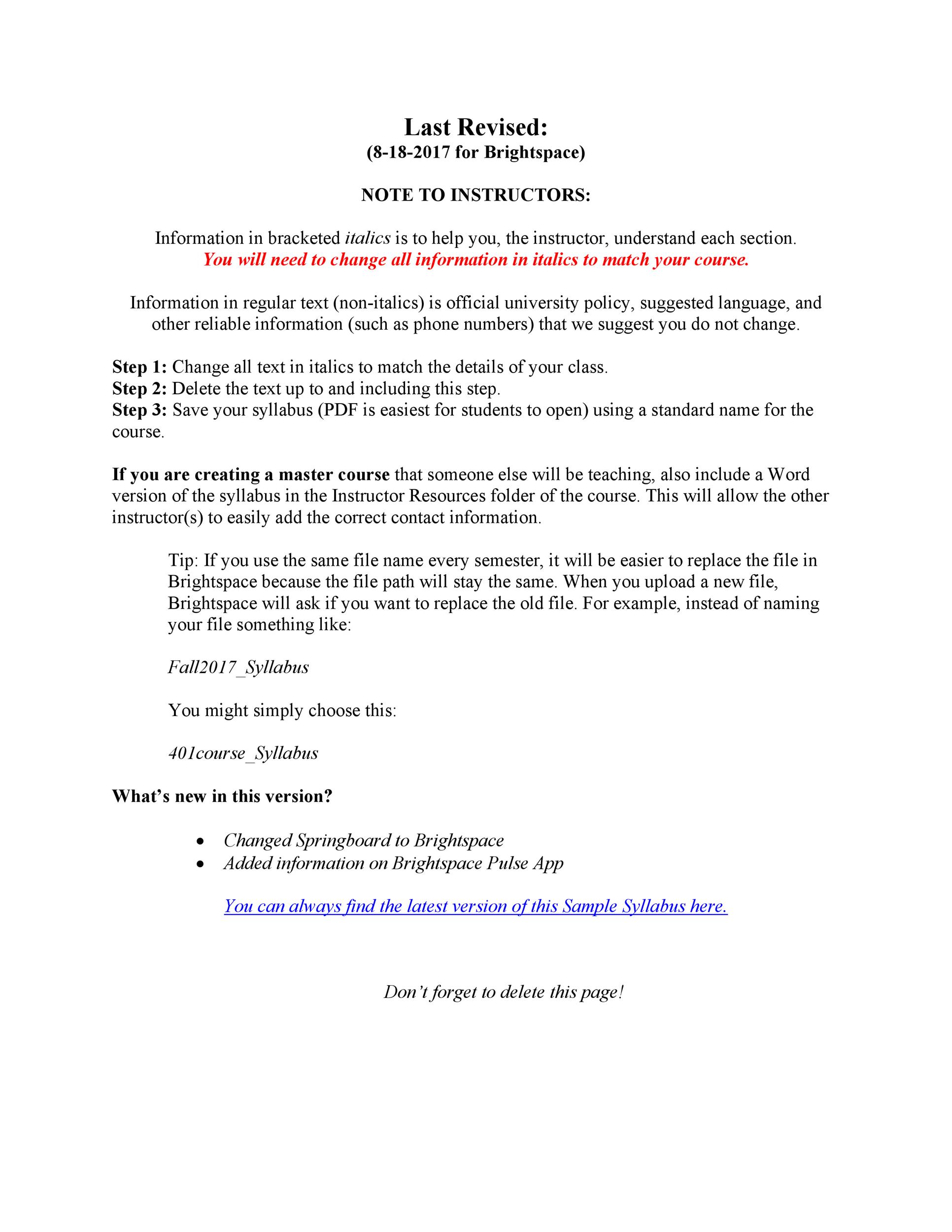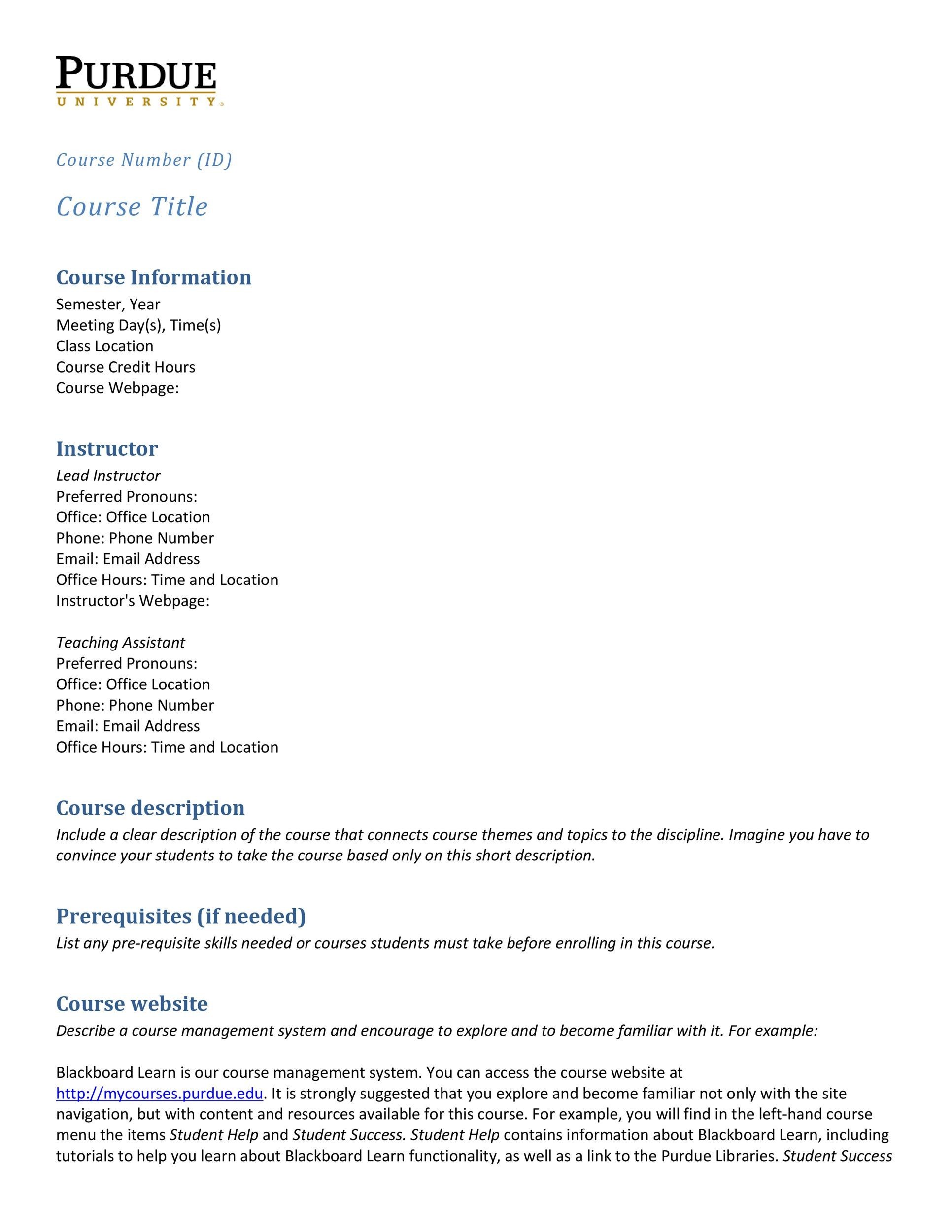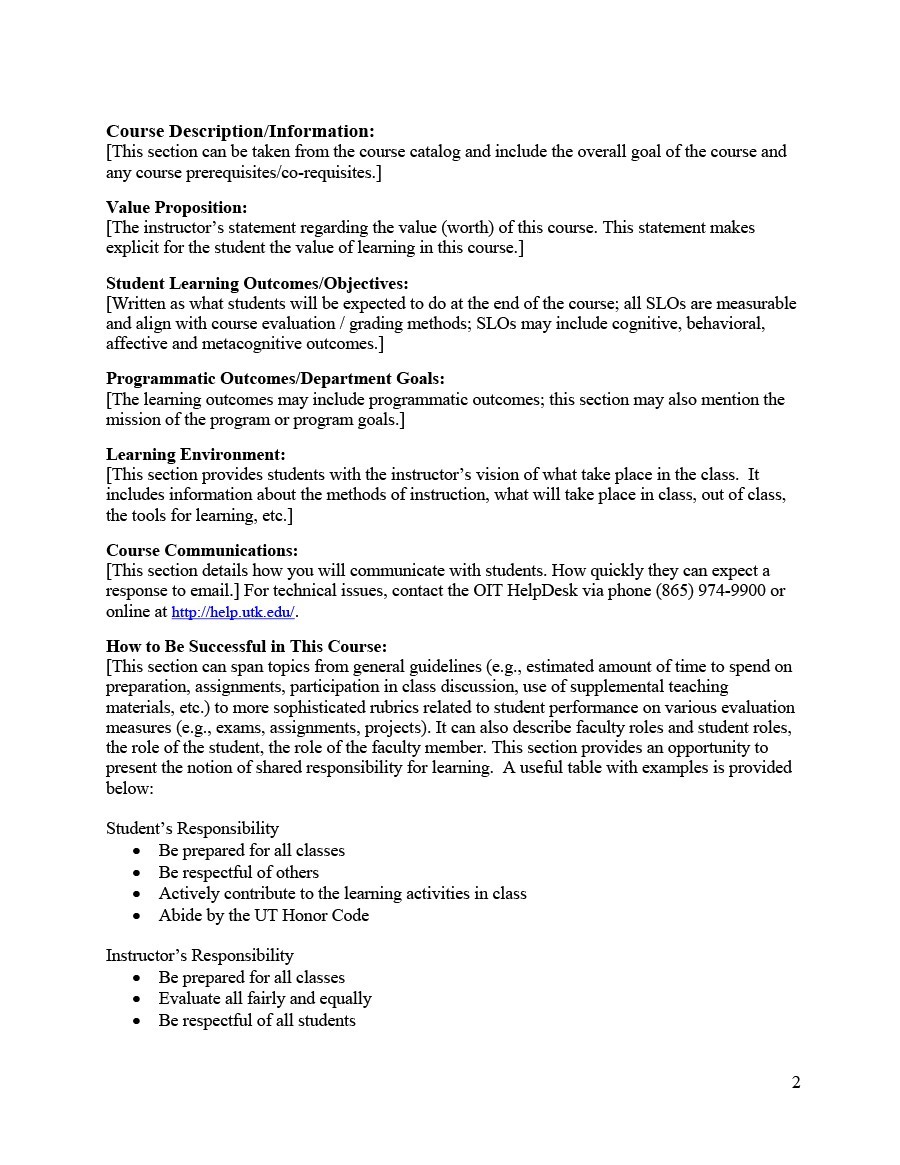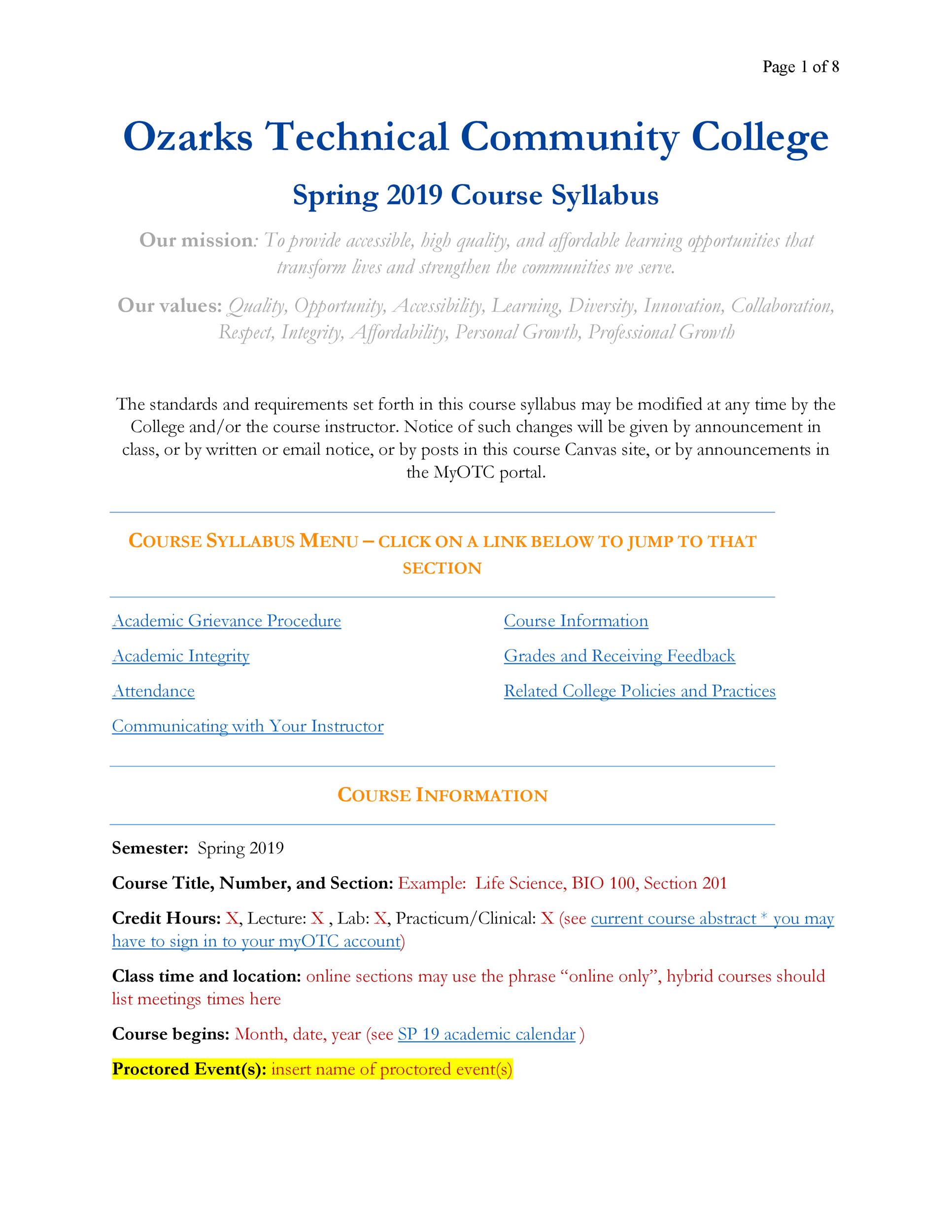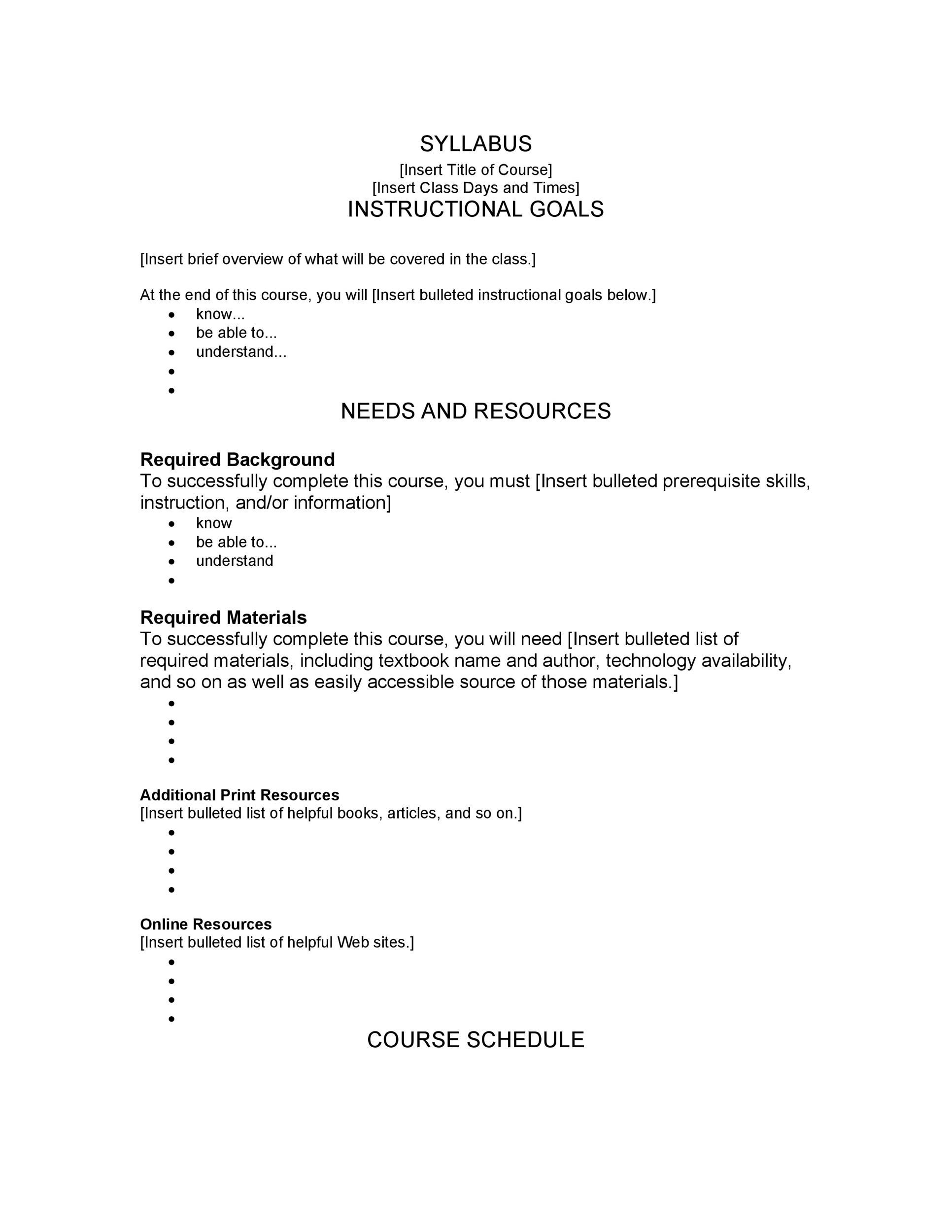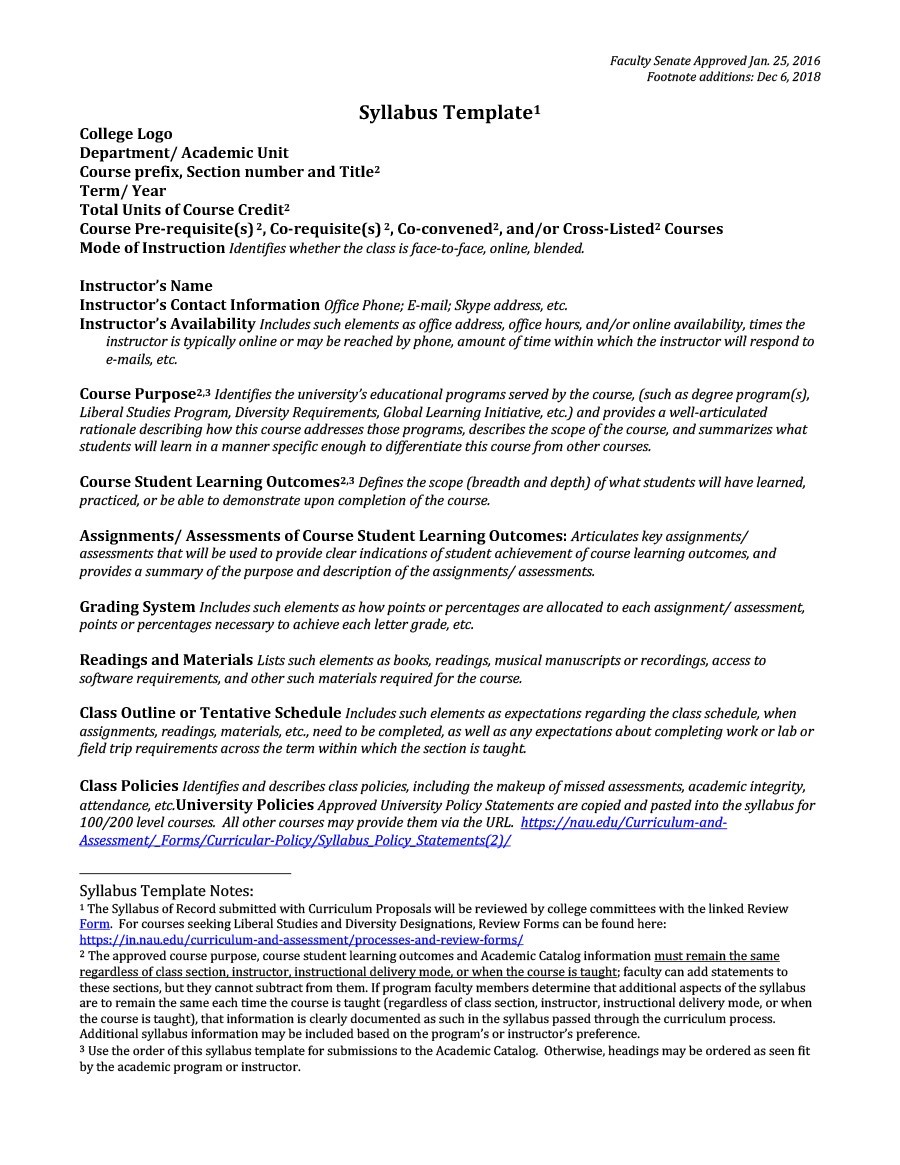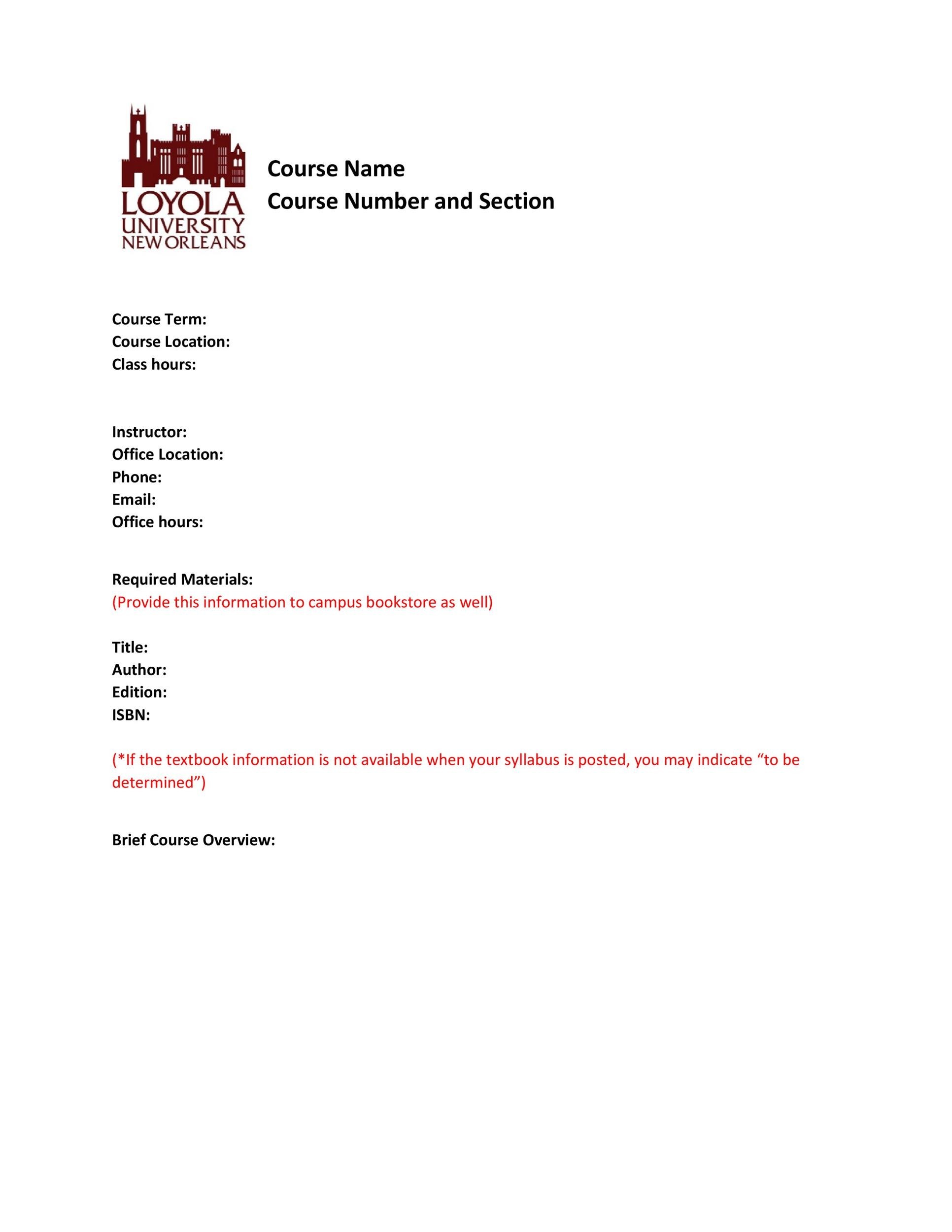Students should be given the best possible opportunity to achieve their potential in school, and this begins at the start of the academic year. A syllabus should be outlined to students at the beginning of each school year so that they can prepare for their studies accordingly.
Education is a constantly changing field, and each syllabus should adapt according to current research. That’s why designing a syllabus for a course of study can be a daunting task for many teachers.
Table of Contents
- 1 Syllabus Templates
- 2 What is a Syllabus Template?
- 3 Course Syllabus Templates
- 4 How do you structure a syllabus?
- 5 College Syllabus Templates
- 6 Benefits of using a Syllabus Template
- 7 High School Syllabus Templates
- 8 How to Create a Syllabus Template
- 9 Outline a Clear Course Syllabus for Your Students Using Syllabus Templates
A syllabus template makes it easier to design and structure the syllabus so that all aspects of the course are covered. It’s important that syllabuses are designed with students’ best interests in mind, with clear outcomes and course goals outlined. Using a syllabus template ensures that this information is clearly displayed for students to plan their studies for the academic year.
You can download a free editable syllabus template to print and share with your students, helping to prepare them as much as possible for their studies.
Syllabus Templates
What is a Syllabus Template?
A syllabus template is a document that provides students with a breakdown of all aspects of the course they will be studying, including what’s included in the course, why it is taught, and what they can do to achieve a passing grade. This ensures that students are prepared for the course and know exactly what to expect in class.
Giving a syllabus template to each student in class on the first day of school ensures that you have communicated your expectations for the course, and it helps to answer any questions students may have at the beginning of the school year.
Syllabus templates are suitable for high school students and college students. They allow students to organize themselves and know what to expect from the course.
Depending on how your course is structured, you may choose to provide one cohesive syllabus template at the beginning of the year outlining the whole course. Alternatively, you may prefer to provide a new syllabus template each semester so as not to overwhelm students with too much information, or to help refresh their understanding of what will be taught in the course.
Course Syllabus Templates
How do you structure a syllabus?
The structure and format of a syllabus will differ greatly depending on the subject you’re teaching, and your school’s educational framework and guidelines. However, there is a basic outline for structuring a syllabus that will help you when deciding which elements of the subject you should teach to your students.
If you are tasked with designing the syllabus template for a specific course or a range of courses, then it’s essential that you include these sections in your template to provide students with as much information as possible.
- Title and Course Information
The title of the syllabus and course information should be clearly stated at the top of the syllabus template. You should include the course code if it’s available, as well as the teacher or professor’s name and contact information.
For college syllabus templates, remember to include office hours so that students can visit their professors for assistance if necessary. - Course Description
This will make up the bulk of your syllabus template. Include a detailed description of the course, along with course goals, objectives, and key themes. In this section, you are essentially highlighting what will be taught, and why it’s important for students to learn this information.
You should also include any textbooks or materials that are required for the course, and where students can find them if necessary. - Learning Outcomes
Learning outcomes are what students are expected to achieve by the end of their course of study. You could separate learning outcomes by topic or semester, or simply provide learning outcomes for the end of the entire course of study.
Learning outcomes should be measurable, clear, and specific. Many teachers use a specific learning outcome framework or theory to help write their learning outcomes. For the most effective results, learning outcomes should include an action verb, describing what students should be able to accomplish by the specified time frame. Learning outcomes provide students with achievable goals that they can work towards throughout the school year. - Course Schedule and Timeline
The course schedule will be one of the first things students look for when reading a syllabus template. One of the most efficient ways to present this is with a week-by-week breakdown of the course, including the topics that will be covered, readings, and assignment dates.
A timeline is an effective way to display the schedule, and in this, you can easily outline the expectations for each class session, as well as any required preparation or in-class activities that students will partake in.
Many students will be curious about deadlines so that they can best prepare for tests or assessments, so be sure to include key dates, such as project due dates or exam dates. - Grading and Assessment
Each syllabus template will follow a different timeline and structure, but students need to know how to pass the course regardless of when assessments or exams take place. In this section, the grading system should be clearly explained. This includes a description of the weighting of each assignment or exam.
This section is also your opportunity to express your expectations and criteria for evaluating student work. You may wish to include examples of previous student work, or clear rubrics so that students are aware of what their grades are based on.
Your institution may also include participation and attendance in a student’s overall grade point average or percentage. This should be explained in this section, along with the attendance policy in detail. There should also be an explanation of the guidelines for late submission or plagiarism. - Course Policies and Expectations
Each syllabus template should conclude with the course policies and expectations. These should be linked to the school’s ethos and rules. These policies will include:
Attendance
Participation expectations
Academic integrity
Behavior and conduct
Students should also know the procedures for who to contact should they have an issue or query throughout the course.
College Syllabus Templates
Benefits of using a Syllabus Template
Increased efficiency and improved time management
By using a syllabus template, instructors save time and effort in structuring the essential components of a course. Templates provide a standardized format, eliminating the need to create a new syllabus from scratch each time a course is offered.
This means you can easily re-use your syllabus templates each academic year, providing the course does not change. If it does change, you can simply download a new syllabus template and edit the information.
Organization and Clarity
A syllabus template ensures a consistent and organized layout, allowing students to easily navigate and understand the course requirements. Clear headings and subheadings lead to improved communication and reduce the chance of misinterpretation.
Having a syllabus template at the beginning of the academic year also gives students a better opportunity to organize themselves and make sure that they are fully prepared for deadlines. Students can create a study schedule based on the syllabus and give themselves the best possible start for the school year.
Alignment with Institutional Policies
A syllabus template should include school policies that comply with institutional guidelines or departmental standards. When designing a syllabus, teachers can easily incorporate statements about academic integrity, disability accommodations, or anti-discrimination policies.
This creates a culture in which the school’s ethos is apparent throughout all of its teaching and material, and students will become more aware of what is expected of them in terms of both their studies and their behavior.
Enhanced Communication
A well-structured syllabus template fosters effective communication between educators and students. By explicitly stating expectations, policies, and learning objectives, students are more likely to feel comfortable seeking clarification or support. It also prevents any misinterpretation or confusion around the course expectations, making students feel less overwhelmed throughout the school year.
Having a document that outlines all of the expectations for the year also improves communication between educators and parents. Parents can refer back to the syllabus if they are helping their child with homework or a project, and allows them to reference deadlines if their child is struggling to stay organized.
High School Syllabus Templates
How to Create a Syllabus Template
Creating syllabus templates requires thought and care, and should not be rushed. You should set aside a chunk of time to complete each of these steps to ensure that your syllabus template is effective, organized, and well-researched.
Syllabus templates are best designed using an online tool, such as Google Docs or Microsoft Word. You can make this process even easier by downloading a free printable syllabus template, which you can easily edit and input your own information.
- Research and Review. The best place to begin is by familiarizing yourself with your institution’s policies, departmental guidelines, and syllabus requirements. An effective way to start the research process is by examining existing syllabuses for similar or related courses to gather ideas and decide what material is most suitable for the course of study.
You should be aware of the students in the class and their ability level, and consider this when deciding on material. However, you may wish to create a general outline for the course syllabus template and adapt this as necessary, depending on the ability level and needs of the students.
Depending on your state or country, there may also be different syllabus requirements, so make note of these before deciding on the best topics for the course. - Identify and Outline Essential Components of the Course
Once you have researched what should be included in the syllabus, you can decide which headings and subheadings you want to include in your syllabus template. Each subject will require a different structure and different material, so analyze the specific needs and requirements of your course and adjust the structure accordingly. - Use Clear and Formal Language
When writing the course syllabus template, you should use a formal tone throughout to maintain professionalism and clarity. This means avoiding jargon and writing in a language that is accessible and understandable for all students. - Provide Examples and Context When outlining the course details and expectations, using examples can be a great way to provide context for students. This could be examples of previous student work, or a visual aid such as a table or graph to demonstrate more complex topics. A visual timeline is also useful when explaining the course schedule.
Students will also benefit from understanding why this particular course is important for them. You should demonstrate the correlation between the course content and real-life applications or industry relevance to highlight this. - Review and Edit
Finally, ensure that all the sections of your template align with your intended course goals and objectives. Be sure to proofread for any grammatical errors or inconsistencies. If possible, seek feedback from colleagues or instructional support staff before finalizing your syllabus template, as this will be an important document that represents the school and its policies. A second opinion will be particularly useful for this kind of resource.
Outline a Clear Course Syllabus for Your Students Using Syllabus Templates
Creating a syllabus template is a critical step toward effectively managing a course of study. By structuring the template with clear headings, incorporating essential components, and using a formal tone, educators can ensure a smooth start and provide clarity to students, setting a positive tone from the beginning of the academic year.
You can choose from a range of free syllabus templates to download and edit, and by following the steps provided here, you can create a syllabus template that caters to the unique needs of your course and promotes a positive learning experience for your students.

















